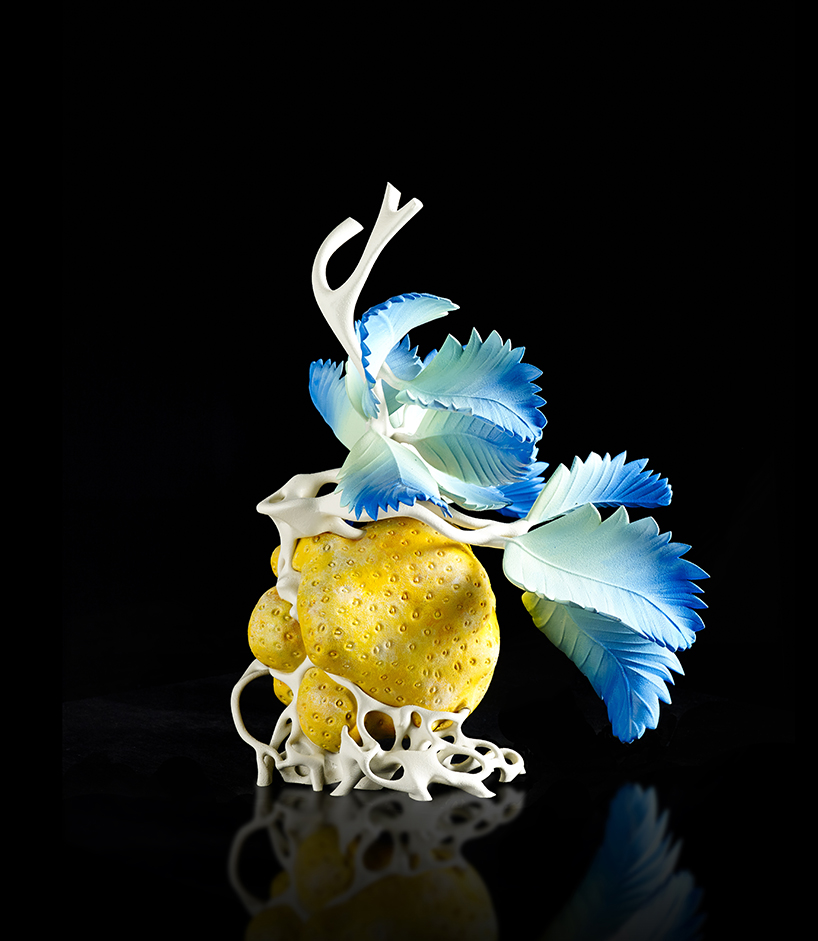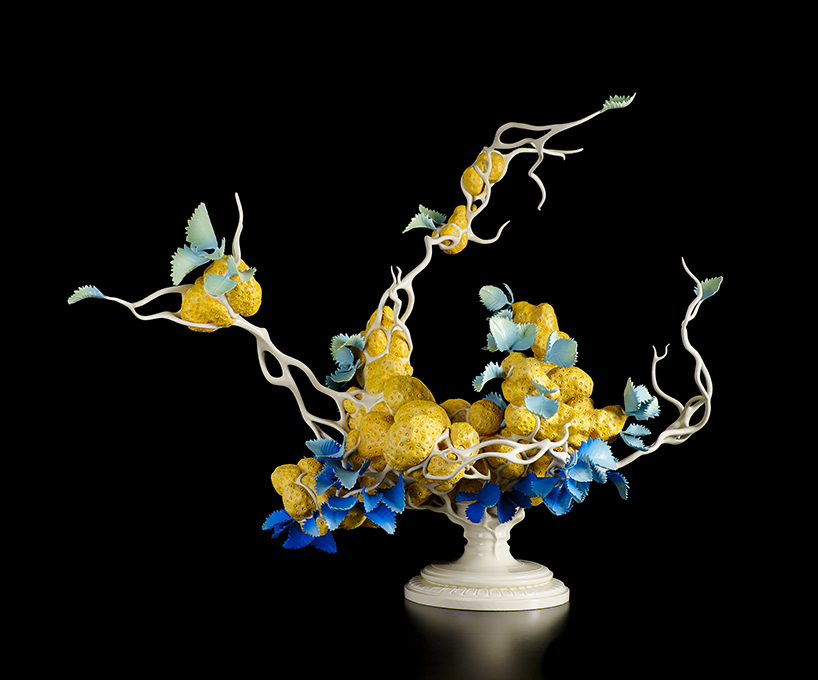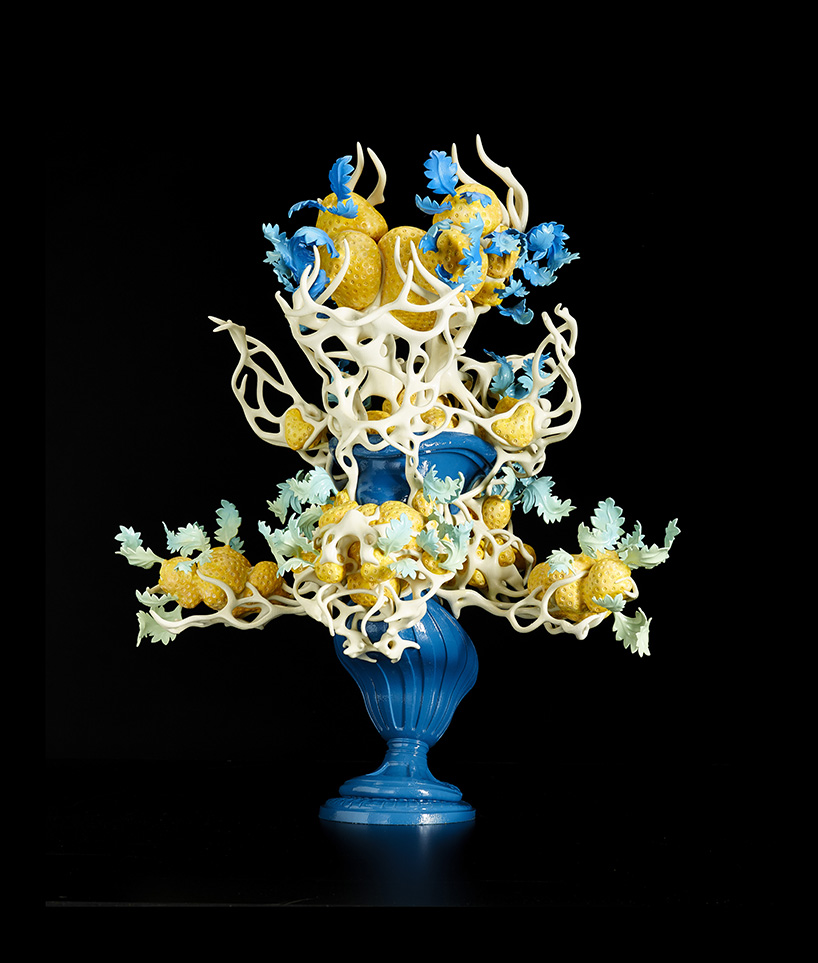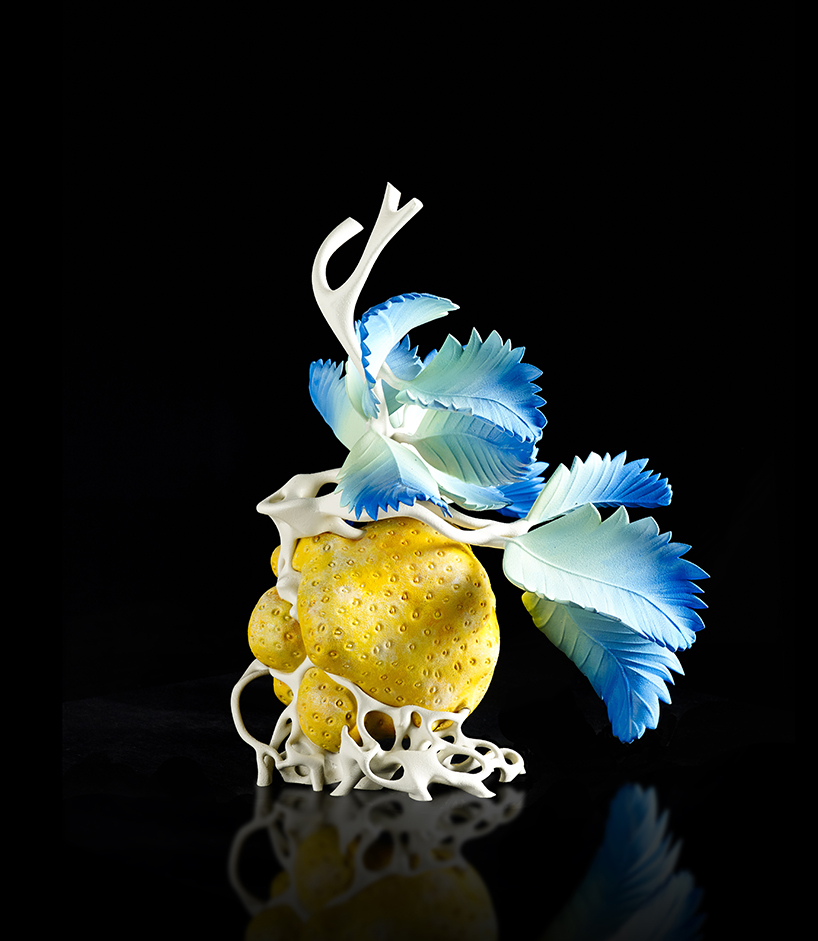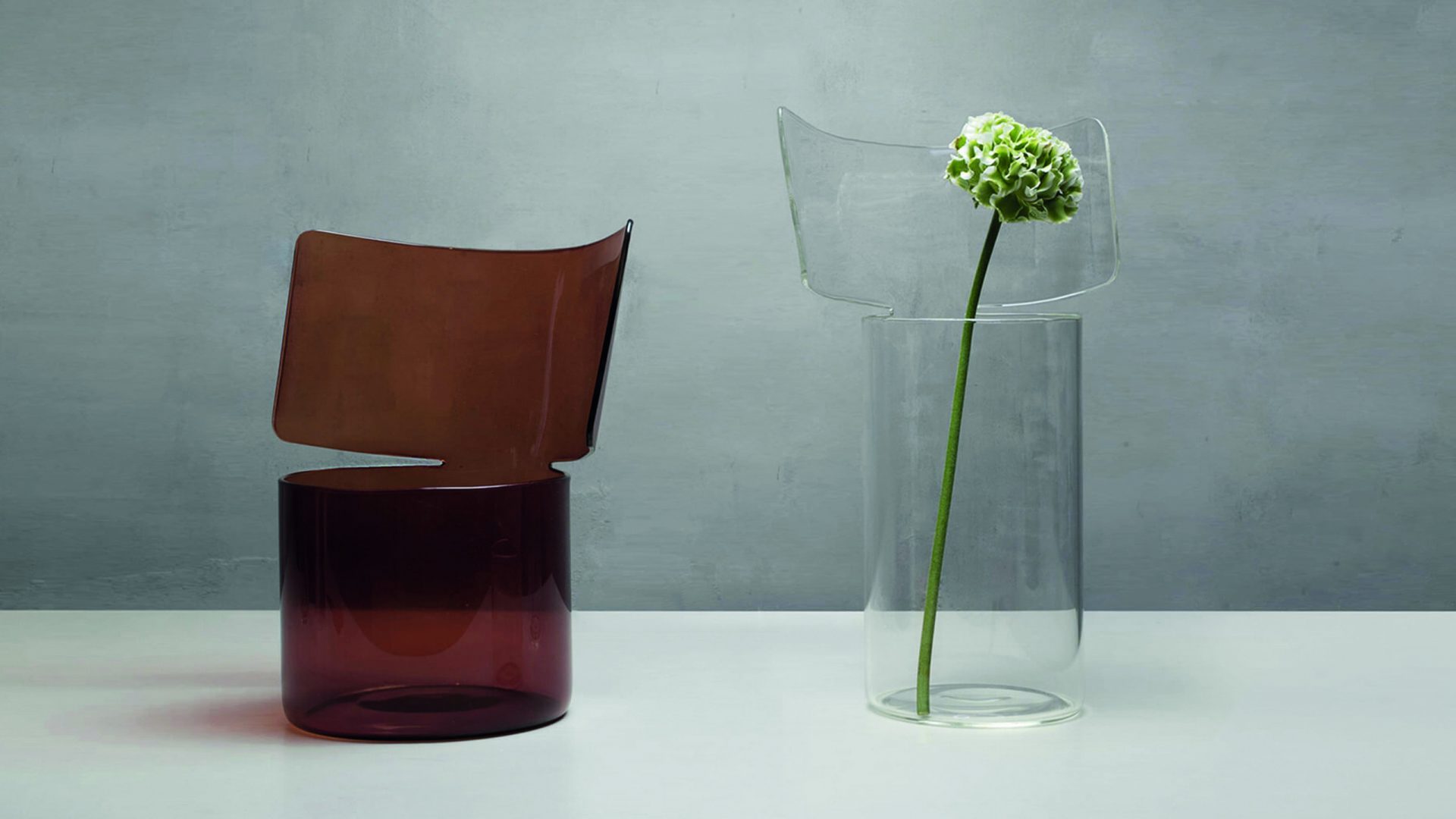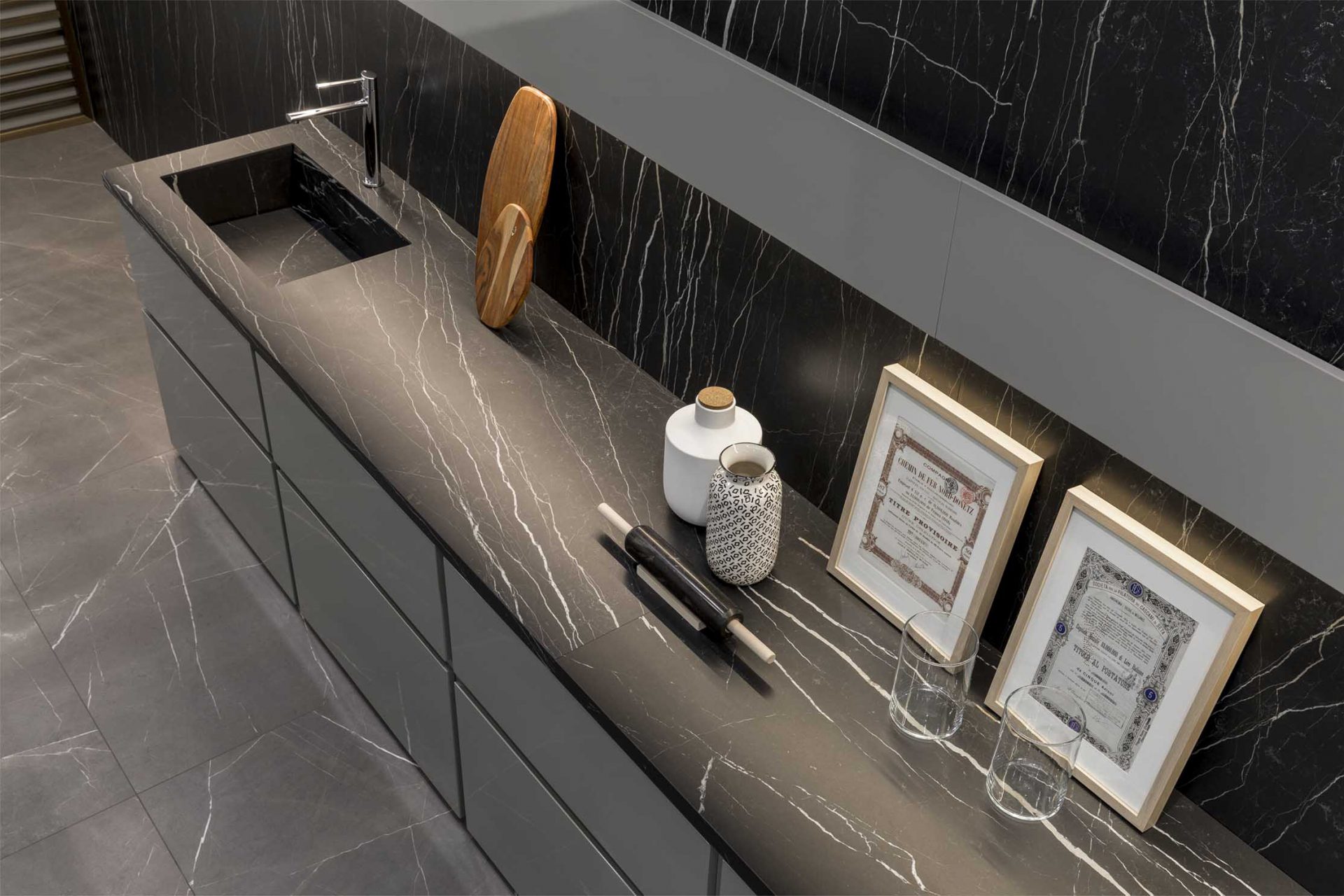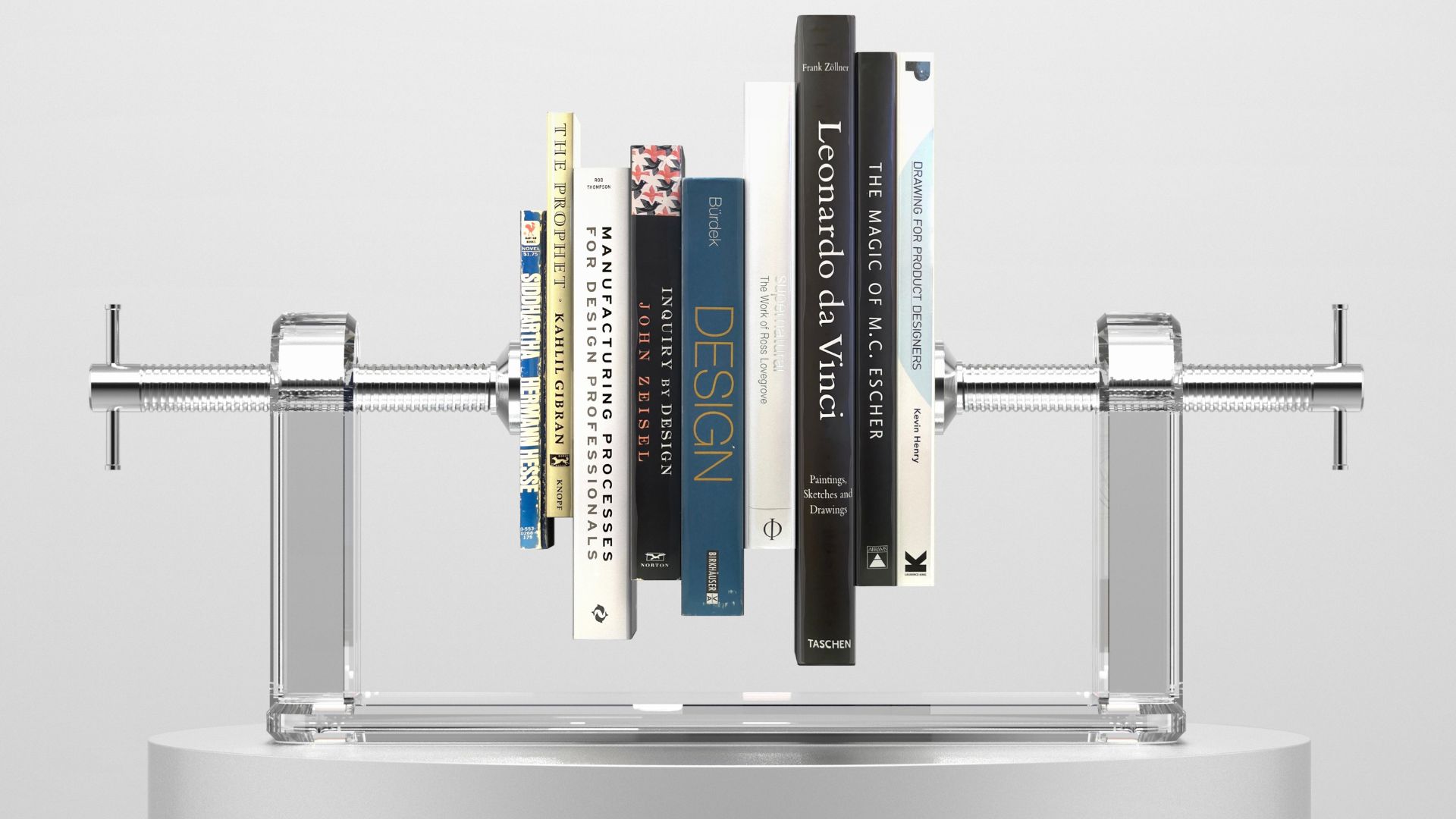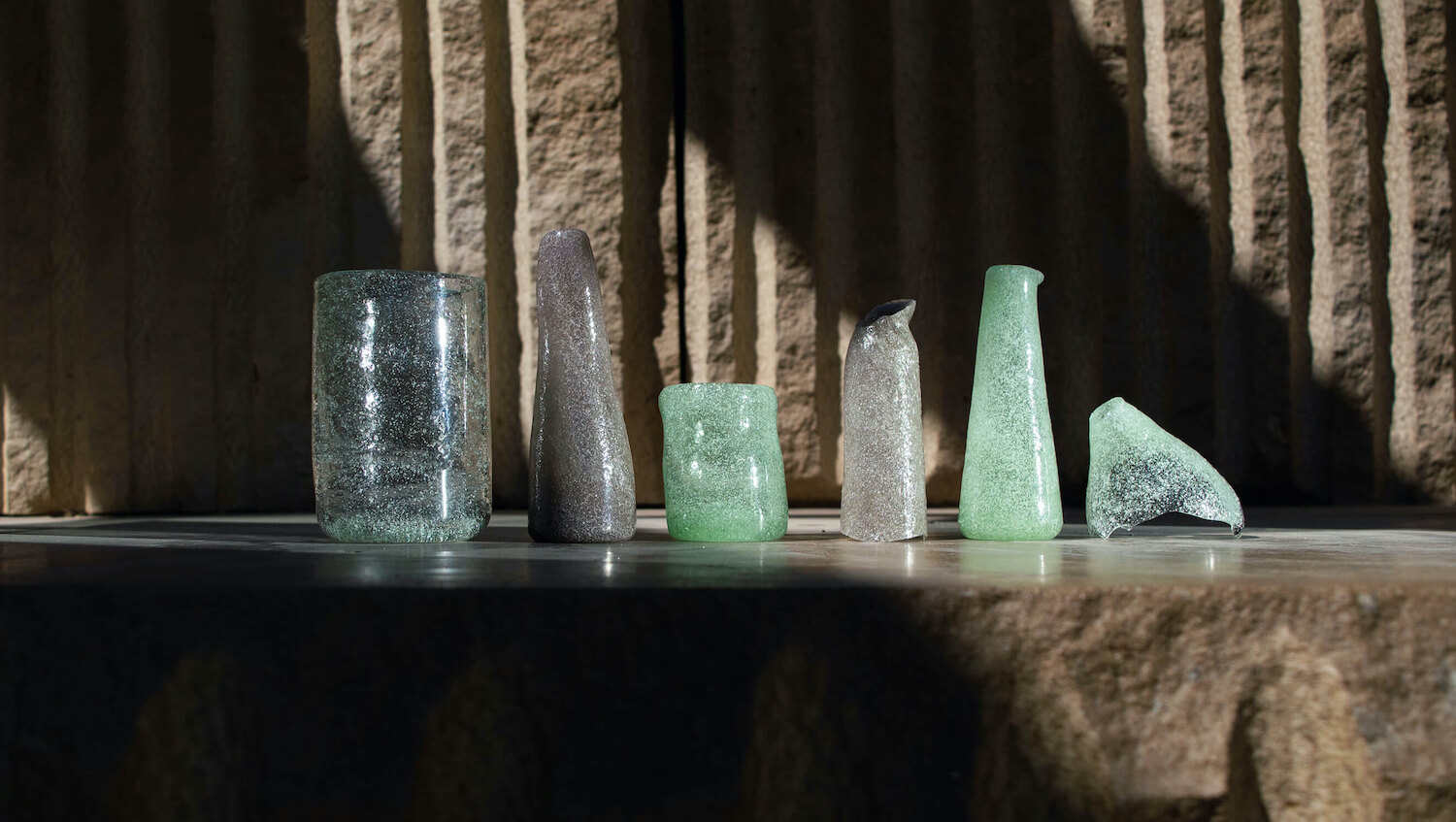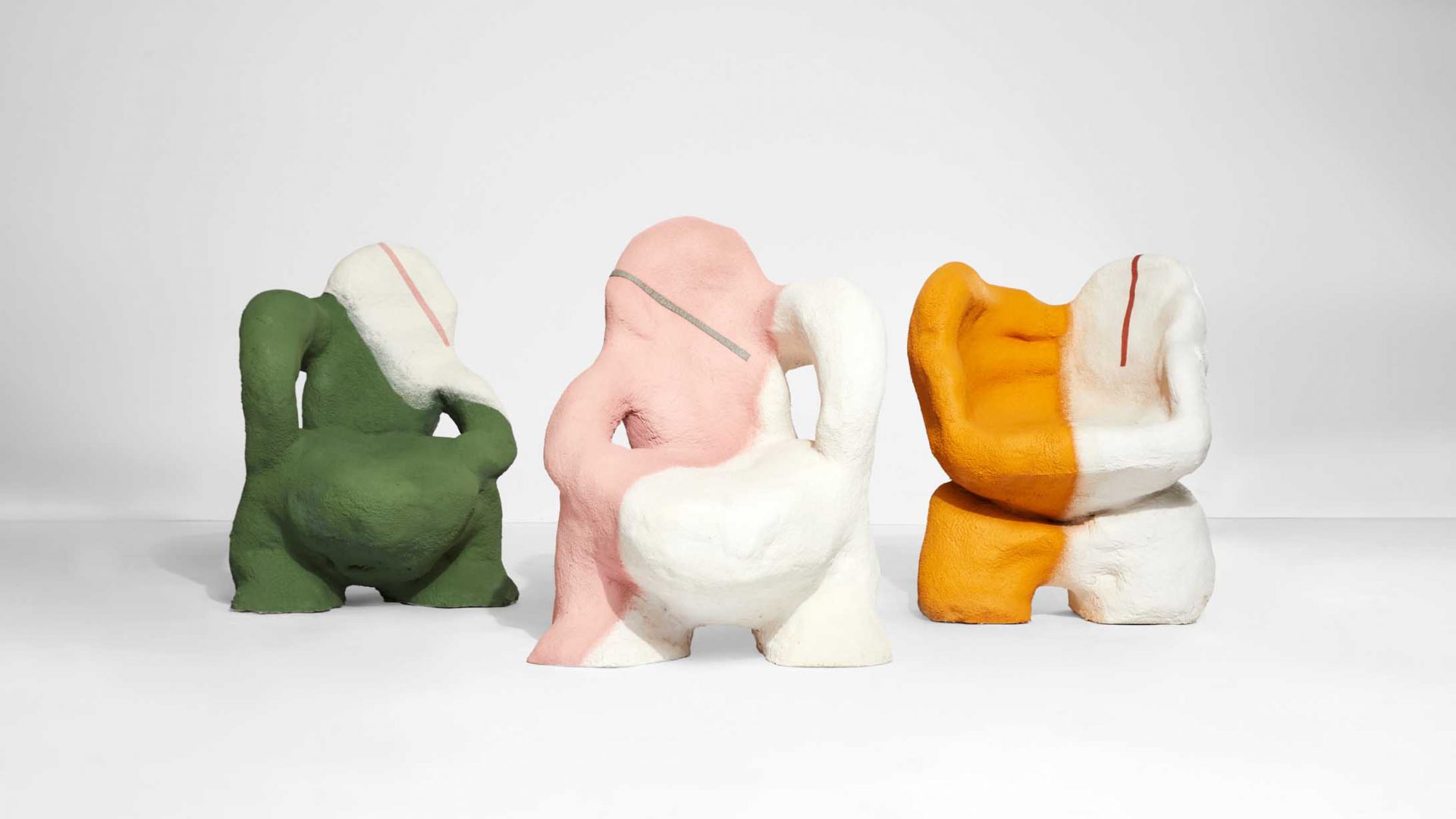The plant mutation and futuristic organic shapes of studio Nick Ervinck
Research into crop mutation is not new. Teams of researchers continue to look for ways to optimize our crops and food security
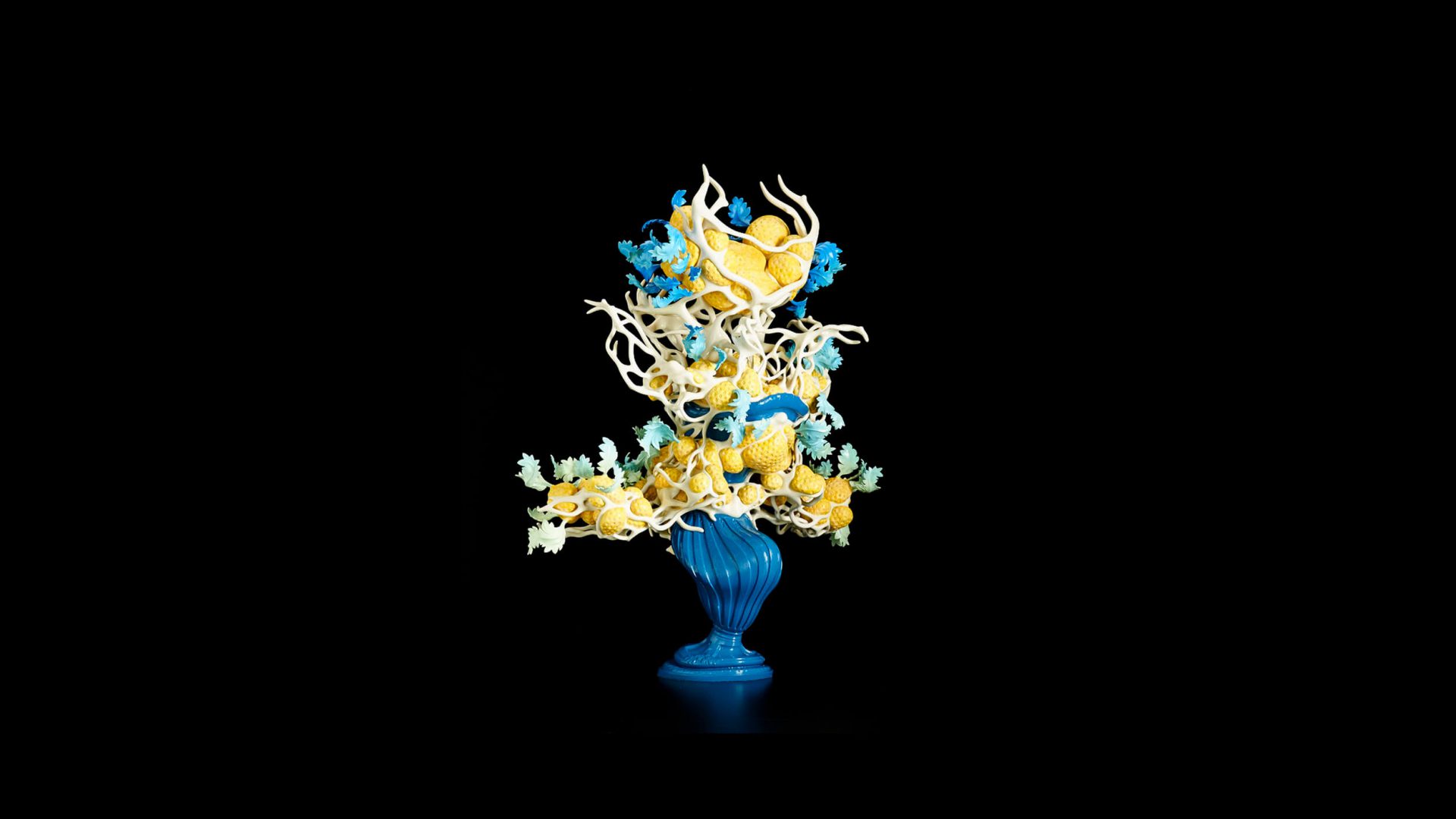
For the design of these excessive and futuristic organic shapes, Nick Ervinck derives inspiration from the 18th-century Meissen vases that he saw at the Victoria and Albert Museum in London.
These vases are lavishly decorated with plants, animals, and creatures that can seem more beautiful than their originals in the natural world.
While this Rococo-style porcelain is a testament to the great craftsmanship, it also has an absurd side, a combination that the artist strongly admires.

While Rococo and Baroque are not styles that many people enjoy today, these artistic forms of plant mutation are an ode to the aspirations of that generation of sculptors.
On the other hand, these artworks question how far we can or should go in manipulating food.
Research into crop and plant mutation is not new
Following the Second World War, the socalled “Atoms for Peace” programme was established to look into ways to use nuclear energy for peaceful purposes.
In the gardens of national laboratories in Europe and the former Soviet Union, plants were irradiated in such a way that different varieties could be produced.

With these disease-resistant mutations, scientists hoped to solve the problem of food shortage. It is not known if these genetically manipulated crops effectively meant an improvement to public health, but it did seem that now scientists could play God.
Today, teams of researchers continue to look for ways to optimize our crops and food security. Nick Ervinck is fascinated by the idea of an engineered world.




